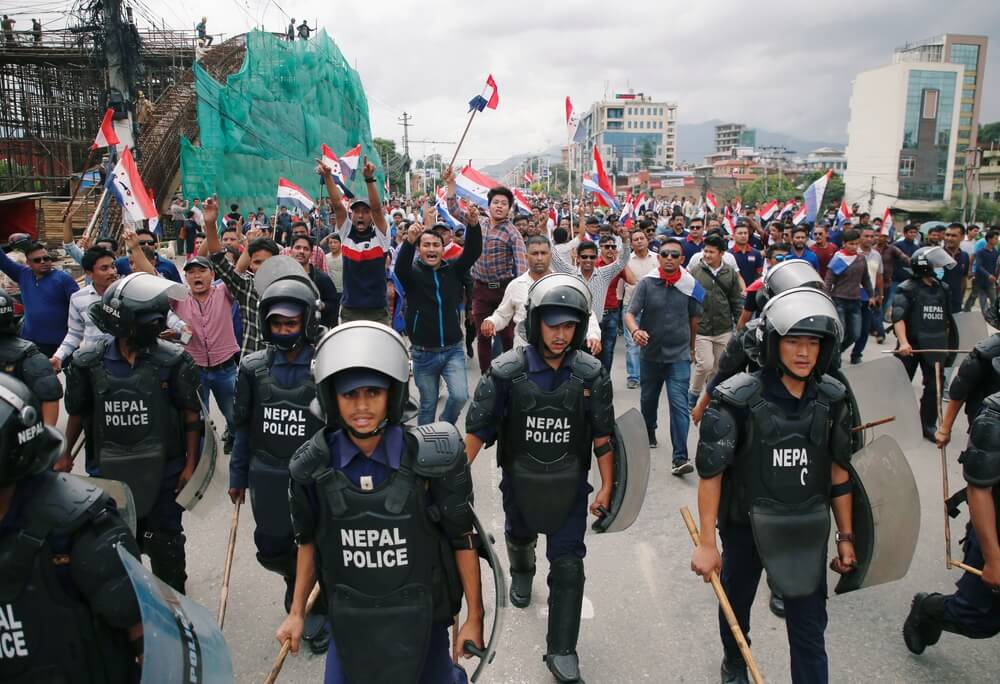From Nepal to Morocco, a wave of protests led by Gen Z using digital media has taken governments by surprise as they become the focus of anger over corruption and mismanagement.
Madagascar, where at least 22 people were killed by security forces, became the latest country to be roiled by protest following demonstrations in recent months, ranging from Indonesia and the Philippines to Peru and Paraguay.
The exact trigger for the demonstrations of discontent in each country may differ in detail, but Gen Z — those born between 1997 and 2012 and who grew up with the internet — has been at the forefront.
The protests are also genuinely “populist” in that they have been the expressions of the poor, in contrast to the populist rhetoric of “pro-elitist” and right-wing governments seen in countries including in Europe, the US, India and Russia.
The protests so far appear confined to the Global South, but they may become fuel for right-wing parties in Europe, for example, by fanning fears that unrest in Morocco could become a spur for migration.
Left-wing parties may also use them to shine a light on the elite classes under seemingly stable governments and their capture of riches and resources.
“Real hardship and anger at the elites”
“So-called populists come to power by talking the talk — promising prosperity and dignity for the poor, the unseen, and the left-behind,” wrote Eeshani Kandpal of the Center for Global Development (CGD).
But in the latest protests, “these are not just rhetorical populists making promises; they are (seemingly) genuine populist surges, grounded in real hardship and anger at the elites who have failed to deliver after years, even decades, in power,” she said.
The latest demonstrations of collective outrage have inevitably drawn comparisons with the Arab Spring protests that started in 2010, although it remains to be seen if they will meet the same sad conclusion.
Civil wars erupted in Syria, Libya and Yemen, while autocrats retained power in Egypt, Tunisia and across the region.
A fifteen-year wave of youth-led protests
The chances are slim, however, that the latest protests will lead to enduring democratic and social change if past experience is a guide. Between 2010 and 2019, only 34% of unarmed mass campaigns were successful, according to a study in the Journal of Democracy.
The countries where the latest protests and the Arab Spring took place have shared characteristics, including a “youth bulge” in their populations, a generation who bear much of the hardship caused by economic disempowerment.
About 20% of the world’s poor live in South Asia, and 12% of Gen Alphas, who came after Gen Z, notes the CGD.
For a protest to succeed, mobilisation on social media alone is not enough
The recent demonstrations are “the latest chapter in a fifteen-year wave of youth-led protests shaped by digital connectivity” that includes the Arab Spring, Occupy Wall Street in 2011, and pro-democracy protests in Thailand in 2020, Sri Lanka in 2022, and Bangladesh in 2024, says Janjira Sombatpoonsiri of the Carnegie Endowment for International Peace.
For a protest to succeed, mobilisation on social media alone is not enough, she wrote. Hybrid strategies are needed to combine institutional approaches, such as election campaigns, with traditional protests, such as strikes and broad-based alliances across civil society.
However, “the shortcomings of social media-fuelled protests should not lead anyone to believe that change isn’t possible,” she said.
Anger still simmers around the world
Indeed, Nepal’s prime minister, KP Sharma, was forced to resign on 9 September after the country saw the worst unrest in decades and anger over the deaths of more than 70 protestors.
The immediate trigger for the protests was a ban on social media platforms after a “Nepo Kids” campaign that highlighted the nepotism and luxury lifestyles of the children of politicians.
 Nepal’s prime minister, KP Sharma, was forced to resign on 9 September after the country saw the worst unrest in decades
Nepal’s prime minister, KP Sharma, was forced to resign on 9 September after the country saw the worst unrest in decades
Last week, protests spread across Morocco, and three people were killed as they took to the streets calling for better social services and equity. In late August, protests rocked Indonesia, and the following month they spread to the Philippines amid anger over alleged misappropriation of flood relief funds.
In Latin America, thousands of young people rallied in Peru over pension reform and broader criticism of the government and in Paraguay over nepotism and unemployment.
Recent protests in the Indian region of Ladakh were also linked to the Gen Z wave. Ladakh was semi-autonomous until 2019, when the Bharatiya Janata Party government split it from the former Indian-administered state of Jammu and Kashmir. There are growing calls for self-government amid widespread unemployment in the region, which borders China.
Prime Minister Narendra Modi’s government has cracked down, with police killing four people and arresting a popular environmental activist.
In another show of strength, Madagascar’s embattled President Andry Rajoelina appointed an army general as the new prime minister on 7 October in an effort to end the protests against his rule.
But the anger still simmers as it does around the world, and strong-armed leaders will be watching carefully.
“What we saw is the result of years of anger and frustration that has been building up,” a local woman in Ladakh told the BBC. “It's high time people paid attention to what we want.”